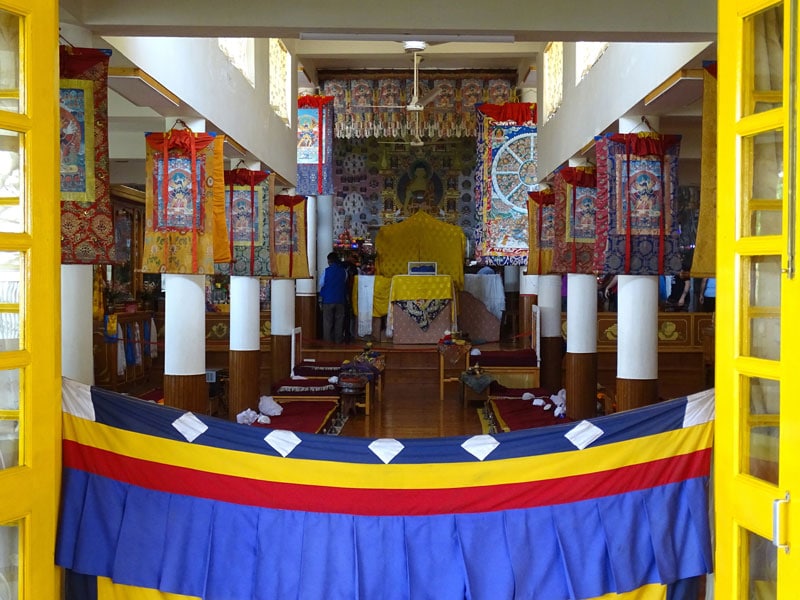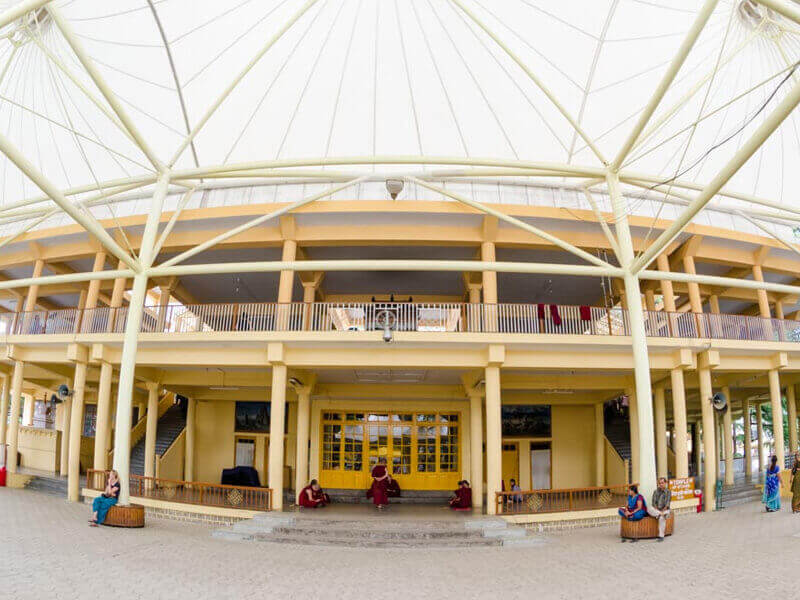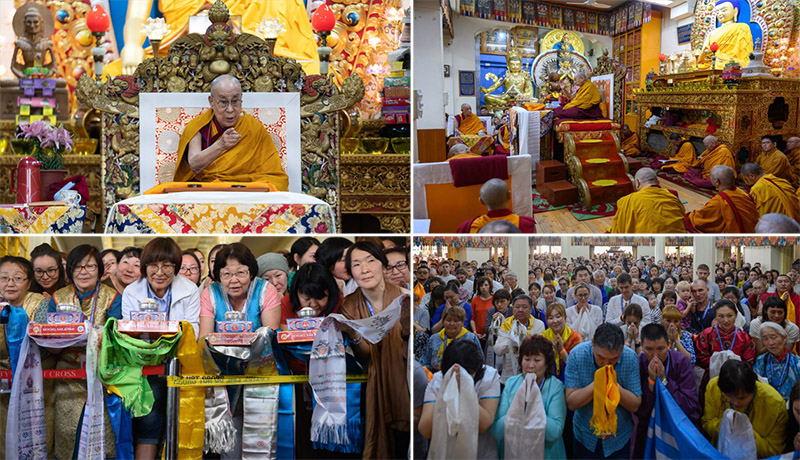Tibetan Temple(Tsuk-lha-khang)
All sentient beings including humans wish for happiness and wish to avoid pain. Pleasure and pain arise from causes and conditions. If one wishes for happiness, one must acquire the cause of happiness and work for the elimination of suffering. The ultimate cause of pleasure and pain depends on whether the mind is tamed or not. So, for the attainment of pleasure and the avoidance of pain, one should strive in the means to transform the mind.
Great wise sages of the old have shown many methods for transforming the mind. Among these, the Teaching of Lord Buddha, with their limitless scope, are in perfect harmony with reason and logic in all their aspects of “Base, path and result”. it has been more than two thousand five hundred years since the Buddha Dharma came into existence and still, there are 500 million Buddhists in this world.
The followers of Lord Buddha strive to attain Enlightenment through the Path of the union of wisdom and method, by relying on the two Truths and the four Noble Truths. In order to accomplish such attainment, one must know the path, which leads to Buddhahood. In general, if one builds images of the Buddha, stupas, and
publishes the rare scriptural teachings, etc. these things will leave new positive imprints on many sentient beings who will see, remember, hear and touch. They will also instill a positive dispositions and act as conditions towards remembering the past virtuous deeds. All these are preliminary methods for a correct understanding of the path to Buddhahood.
The people of Tibet, in particular, were fortunate to have in their midst the organic symbol of the Lord of Infinite Mercy ( Avalokitesvara ) housed in the central cathedral ( Tsuglag Khang ) in Lhasa, forming the presiding figure among what is now widely known as “Five Self-Created Exalted Ones”. In the year 1966, in the wake of the cultural devastation, the image of Avalokitesvara was dismantled and ravaged to the ground. However, in the same year, the Tibetan people were able to smuggle out of Tibet the disfigured portion of the image’s head, which had, fortunately, its sacred contents intact. Thus, with a profound sense of joy and happiness, we Tibetans were able to build a new image of Lord Avalokitesvara, furnished with all the sacred contents brought from Tibet. Compelled by the necessity of having to house the image in a spacious cathedral which could serve of worship and dissemination of discourses on the Dharma, this Cathedral was built and opened to public in the year 1969, corresponding to the earth-fowl year of the 16th Rabjung year of the Tibetan calendar.



